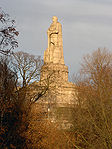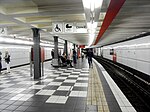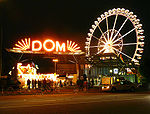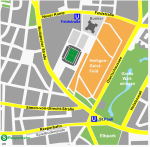Museum for Hamburg History
1922 establishments in GermanyBuildings and structures in Hamburg-MitteCity museums in GermanyGerkan, Marg and Partners buildingsHistory of Hamburg ... and 3 more
Museums established in 1922Museums in HamburgTourist attractions in Hamburg

The Museum for Hamburg History (German: Museum für Hamburgische Geschichte) is a history museum located in the city of Hamburg in northern Germany. The museum was established in 1908 and opened at its current location in 1922, although its parent organization was founded in 1839. The museum is located near the Planten un Blomen park in the center of Hamburg. The museum is commonly reviewed among the museums of the city of Hamburg.
Excerpt from the Wikipedia article Museum for Hamburg History (License: CC BY-SA 3.0, Authors, Images).Museum for Hamburg History
Holstenwall, Hamburg Neustadt
Geographical coordinates (GPS) Address External links Nearby Places Show on map
Geographical coordinates (GPS)
| Latitude | Longitude |
|---|---|
| N 53.551111111111 ° | E 9.9730555555556 ° |
Address
Museum für Hamburgische Geschichte (hamburgmuseum)
Holstenwall 24
20355 Hamburg, Neustadt
Germany
Open on Google Maps








